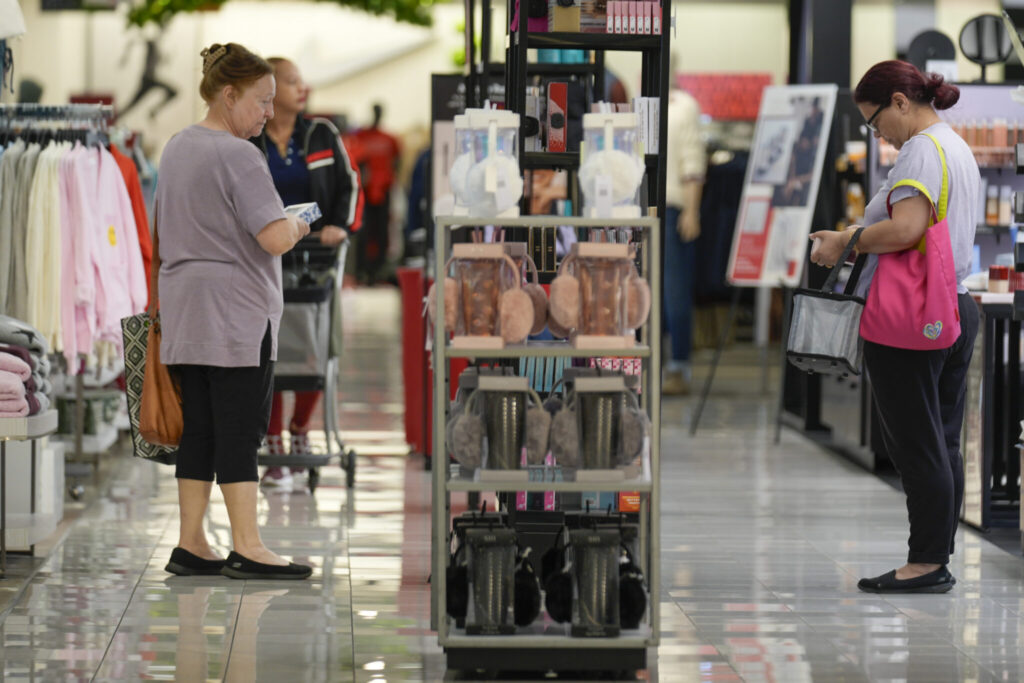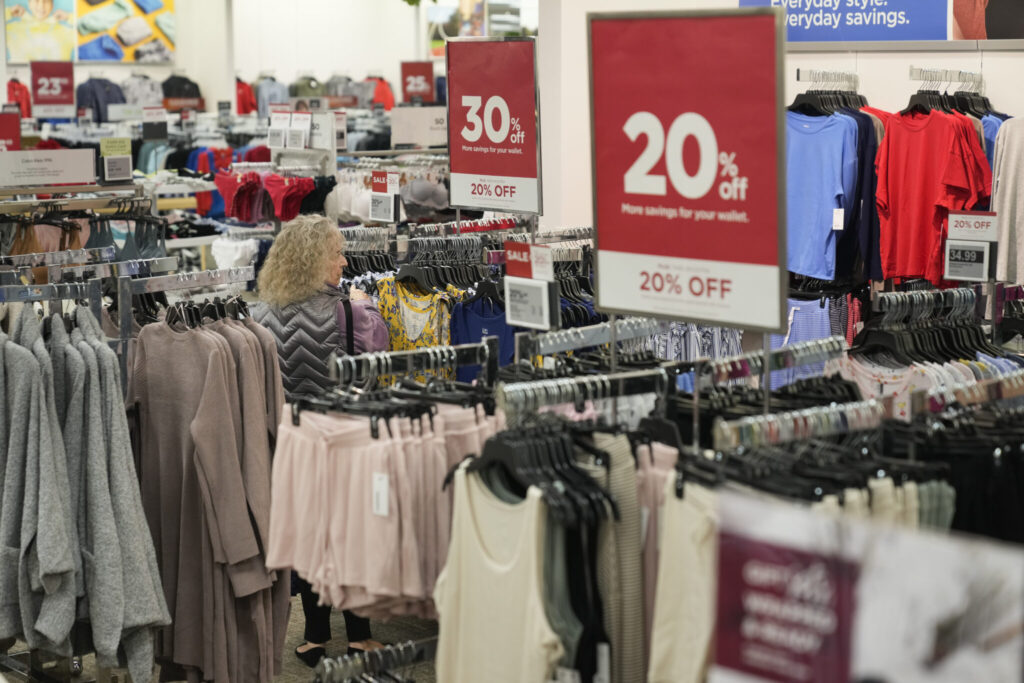U.S. retail sales/ consumer spending/ inflation/ holiday shopping/ Fed rate cuts/ economic growth/ Newslooks/ WASHINGTON/ J. Mansour/ Morning Edition/ U.S. retail sales rose by 0.4% in September as consumer spending drove economic growth, supported by low unemployment and steady income gains. Spending increases were reported in online retail, dining, and grocery, with falling gas prices easing some inflationary pressure. This strong consumer activity sets the stage for a positive holiday shopping season.

US Retail Sales Increase as Consumer Spending Drives Growth – Quick Looks
- Retail Sales Growth: U.S. retail sales rose 0.4% from August to September, led by online retailers, dining, and grocery stores.
- Economic Drivers: Strong employment, rising wages, and asset gains continue to bolster consumer spending.
- Inflation Control: Inflation rose only 2.4% year-over-year in September, aligning closely with the Fed’s 2% target.
- Upcoming Fed Rate Cuts: Economists predict additional rate cuts by year-end, potentially lowering borrowing costs.
- Holiday Season Outlook: Retailers anticipate increased consumer spending, with major stores offering holiday goods earlier.
US Retail Sales Climb, Fueling Economic Growth Amid Cooling Inflation
Deep Look
U.S. retail sales saw a solid 0.4% increase from August to September, a sign that American consumers continue to fuel economic expansion. This uptick in consumer spending, driven by low unemployment, wage growth, and stable asset values, signals resilience in the economy despite higher prices. The September gains were broad-based, with online retailers, grocery stores, and restaurants reporting stronger sales. In contrast, gas station sales fell due to easing pump prices, providing a small break from inflationary pressures.
The retail figures from the Commerce Department reflect the third consecutive monthly increase in sales, underscoring the positive impact of consumer spending on the economy. Unlike many economic indicators, retail sales data is not adjusted for inflation, so the slight dip in goods prices last month contributed to improved spending power. September’s retail sales data also arrives just as the presidential race intensifies, with economic policy differences front and center. Candidate Donald Trump has emphasized new tariffs and lower corporate taxes to spur growth, while Vice President Kamala Harris proposes expanding family tax credits and subsidizing housing to curb living costs.
Several sectors, including clothing, department stores, and sporting goods, saw higher spending in September, while sales dipped at electronics and furniture stores. The U.S. government’s recent report also revealed a 2.4% increase in consumer prices year-over-year, continuing a downtrend from the peak inflation of 9.1% in mid-2022. With inflationary pressures easing, the Federal Reserve implemented its first rate cut in four years last month, a notable half-point decrease. Analysts now expect two smaller rate cuts before the end of 2024, potentially lowering borrowing costs further and providing relief to consumers.
However, data from the Fed suggests that recent spending growth is mainly driven by middle- and upper-income households. These higher-income groups, bolstered by more stable finances, have significantly increased their retail spending, while many lower-income Americans continue to struggle with the lingering effects of inflation and higher interest rates. This trend marks a departure from pre-pandemic spending patterns when spending growth was more evenly distributed across income brackets. According to a research note from Federal Reserve economist Sinem Hacioglu Hoke, by August 2024, retail spending had grown by nearly 17% for households earning above $100,000, compared to just a 7.9% increase for those earning less than $60,000.
Despite these disparities, many retailers anticipate a strong holiday shopping season. The National Retail Federation forecasts a 2.5% to 3.5% increase in holiday spending for November and December over last year. This is a slightly lower growth rate than the 3.9% seen in 2023, reflecting some lingering financial strain on consumers. To attract early shoppers, several retailers, including Balsam Hill and Michaels, have pushed holiday marketing earlier than usual. Balsam Hill, known for holiday décor, transformed its usual fall catalog into a holiday-themed offering, leading to a mid-September spike in sales that arrived nearly a month ahead of last year. Michaels has similarly adjusted its seasonal offerings, rolling out its “Sprinkle Shop” and do-it-yourself craft supplies three weeks earlier to appeal to budget-conscious shoppers looking to make gifts.
As inflation remains under control and borrowing costs begin to ease, economists suggest that these trends could support continued economic growth. With the Fed expected to cut rates further, the holiday season could bring additional gains to the retail sector. While higher-income households are still leading the surge in retail spending, analysts note that a broadly resilient consumer base is likely to provide economic support as inflationary concerns wane and more favorable borrowing conditions emerge.
Retailers and policymakers alike are closely watching these spending trends, which indicate that American consumers remain a driving force for economic stability. As the holiday season approaches, the combination of easing inflation, potential Fed rate cuts, and early holiday promotions positions the retail sector for moderate but steady growth through the year’s end.







